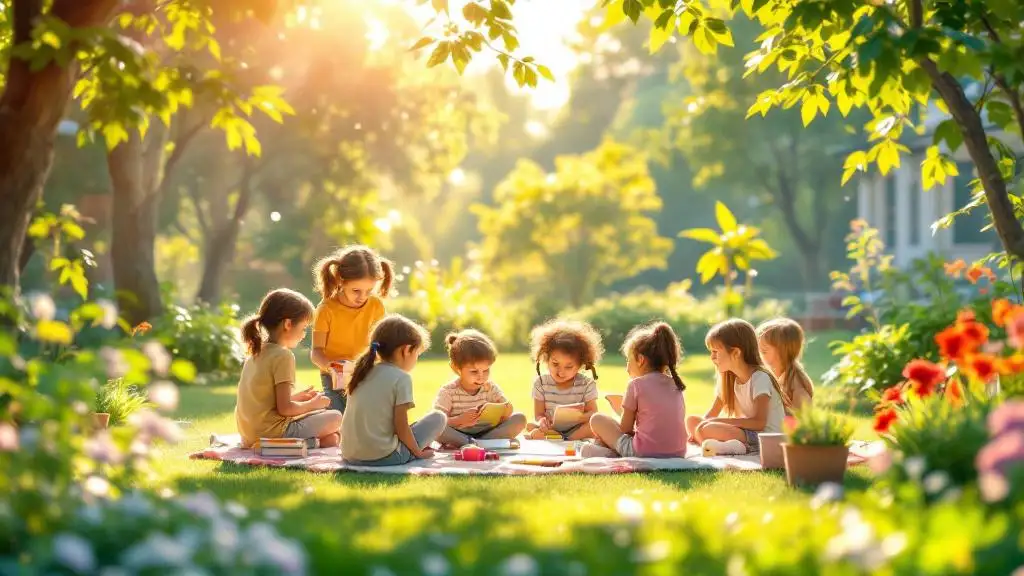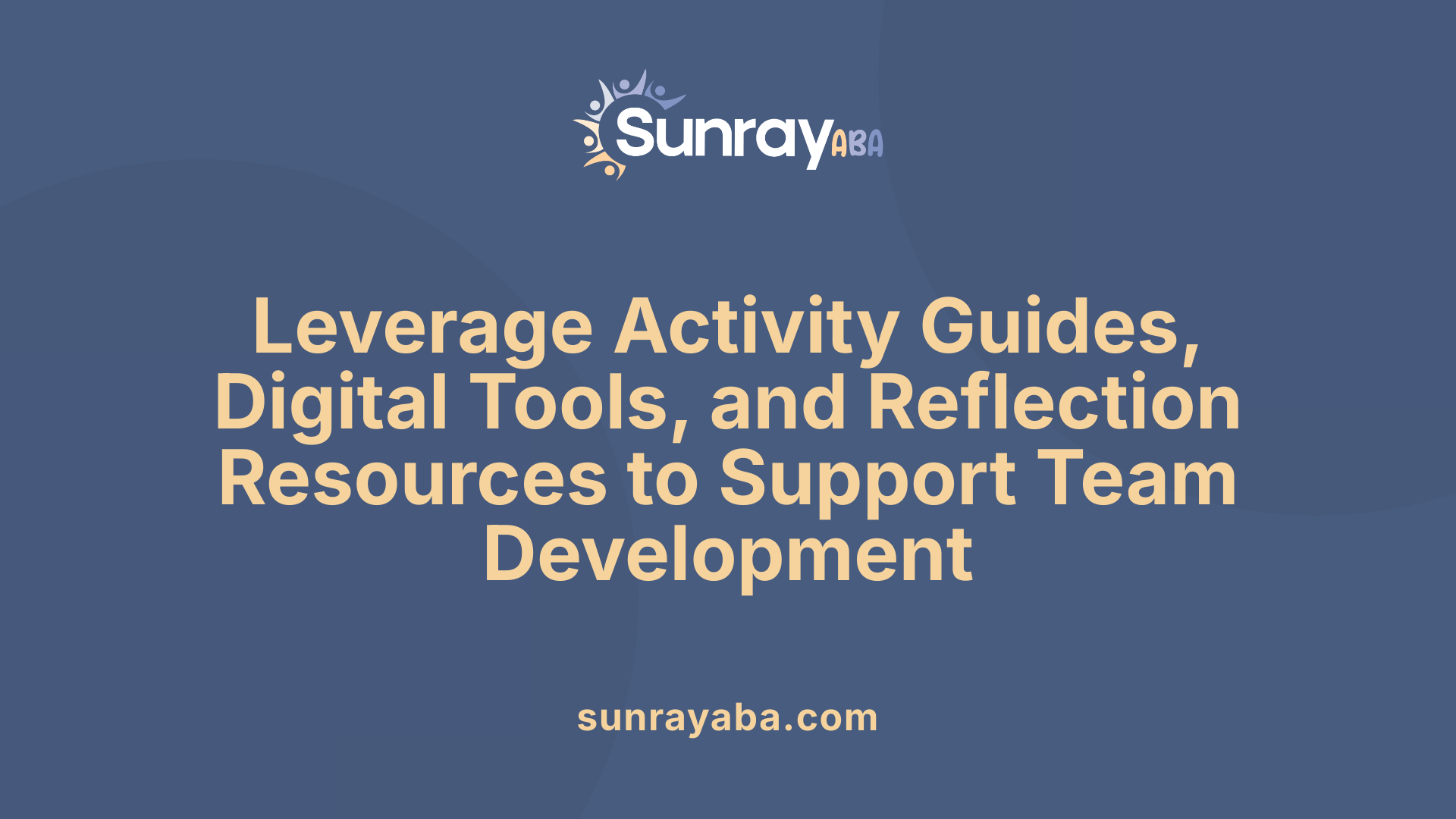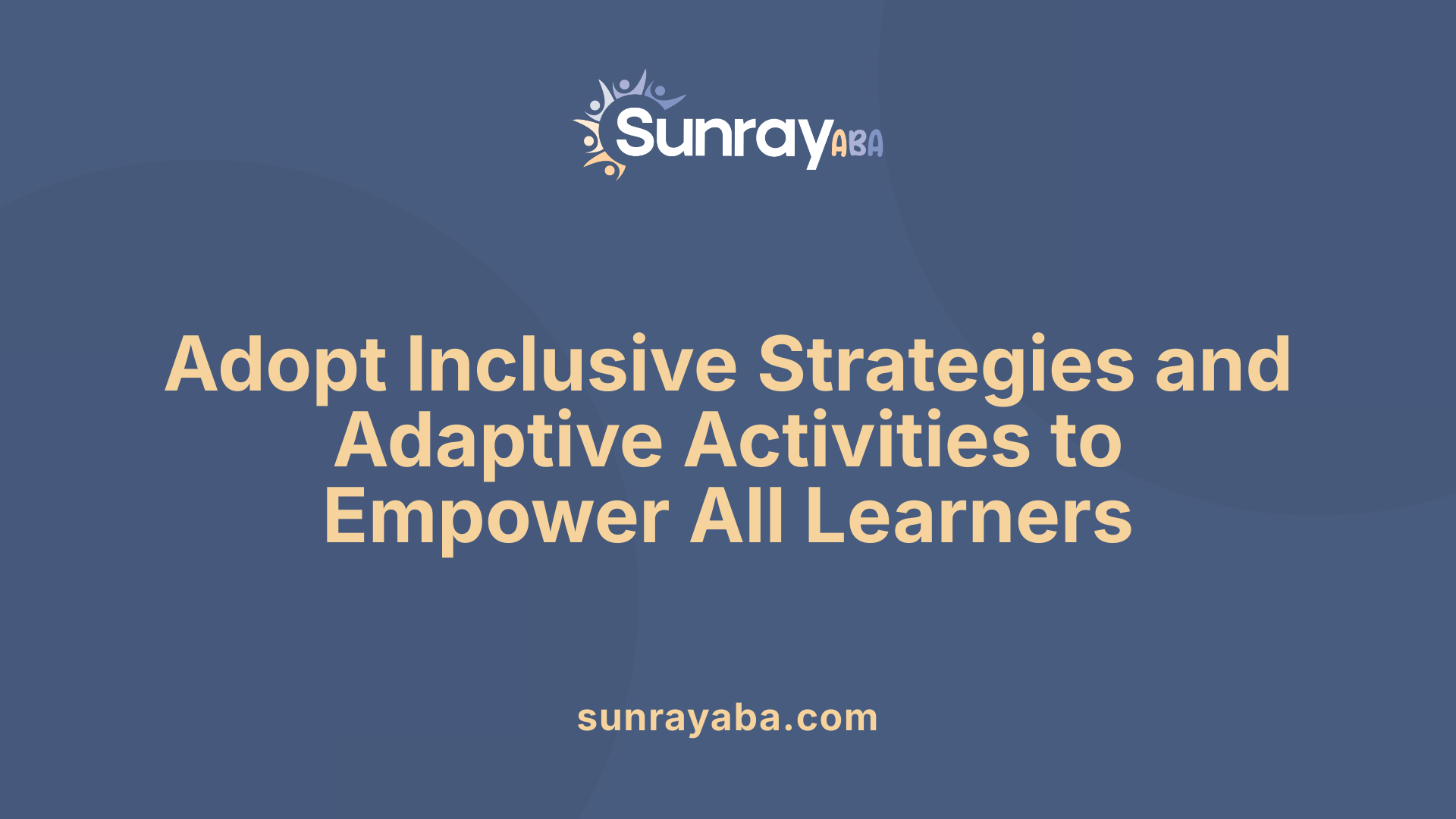Teaching Teamwork Skills Through Group Challenges

Unlocking the Power of Group Challenges in Teaching Teamwork
Teaching teamwork skills is crucial in shaping well-rounded individuals capable of collaborating effectively in various settings. Using group challenges as pedagogical tools offers an experiential approach, promoting active engagement, social-emotional learning, and real-world readiness. This article explores effective strategies for employing group challenges to cultivate essential teamwork skills, highlights a comprehensive array of educational activities and games, discusses methods to design impactful challenges, and reviews available resources to support educators in fostering collaboration and cooperation among students.
The Benefits of Group Challenges in Developing Teamwork

What are the benefits of using group challenges to develop teamwork skills in students?
Implementing group challenges in education offers a wide range of advantages that support both academic and personal growth. These activities foster the development of critical communication skills, enabling students to express ideas clearly, listen actively, ask relevant questions, and interpret nonverbal cues effectively.
Furthermore, group challenges cultivate collaboration and social skills by encouraging students to work together, share responsibilities, and build mutual trust. Through cooperative problem-solving and creative tasks, students learn to analyze data, make decisions collectively, and resolve conflicts constructively. This social interaction promotes inclusivity and respect for diverse perspectives.
In addition to skill-building, these activities boost engagement and motivation, making learning experiences more enjoyable and meaningful. Students often feel a sense of achievement and satisfaction when they overcome challenges as a team, which increases their confidence and commitment.
Most importantly, participation in group challenges prepares students for the workplace, where teamwork and collaboration are highly valued by employers. By practicing these skills early, students are better equipped for future careers that demand effective communication, problem-solving, and the ability to work with diverse teams.
In summary, group challenges not only enhance essential interpersonal skills but also foster a positive learning environment where students develop resilience, responsibility, and a deeper understanding of content—all vital for long-term success.
Variety of Activities and Games for Promoting Teamwork
 To nurture teamwork and foster collaboration, educators can incorporate a diverse range of activities and games that suit different environments and learning objectives.
To nurture teamwork and foster collaboration, educators can incorporate a diverse range of activities and games that suit different environments and learning objectives.
Outdoor challenges such as relay races, tug-of-war, scavenger hunts, and obstacle courses encourage physical cooperation and strategic thinking. These activities help students develop skills like communication, coordination, and leadership while enjoying active play outdoors.
Problem-solving puzzles such as escape rooms and building challenges—like constructing marshmallow towers or problem-based scavenger hunts—stimulate creative thinking and teamwork. Groups must communicate effectively, delegate tasks, and analyze data to arrive at solutions, promoting critical thinking and collective responsibility.
Indoor collaborative activities include tower building with blocks, creating a group mural or mural wall, and drawing exercises that require sharing ideas and working together. These promote trust, foster creative expression, and teach group cohesion in a classroom or indoor setting.
Icebreaker games such as "Two Truths and a Lie," "Mood Pictures" where participants describe feelings visually, and "Penny for Your Thoughts," which encourages personal sharing. These activities help students learn about each other, build rapport, and establish a positive group climate.
Virtual collaboration games like "Show and Tell," where participants share personal items or projects, and "Photo Caption Contests," which stimulate creative dialogue online. These are essential for remote teams, enabling effective communication and building community even when physically apart.
Research supports the inclusion of these activities, revealing that engaging in structured teamwork exercises improves communication skills, enhances problem-solving capabilities, and fosters leadership qualities. Whether in person or online, these varied approaches ensure comprehensive development of teamwork skills essential for educational success and future careers.
Designing and Structuring Effective Group Challenges

How can educators design and structure group challenges to enhance group work and cooperation?
Effective team challenges are designed to promote collaboration, communication, and shared problem-solving among students. Educators should craft tasks that depend on each member's unique skills and knowledge, ensuring that everyone contributes to achieving a common goal. This approach encourages interdependence and active engagement, helping students build trust and cooperative skills.
Clear objectives are crucial. They guide students' efforts and help them understand what success looks like. At the same time, establishing explicit ground rules—such as respectful communication and equal participation—sets expectations and fosters a positive environment.
To keep students accountable, roles can be assigned based on strengths or rotated to develop various skills. Assessments or reflective activities help ensure individual contributions are recognized, reducing the tendency to free-ride.
Using formative feedback during the process allows students to recognize areas for improvement before final submission. Setting interim deadlines keeps the project on track and maintains momentum.
Motivating students through rewards, recognition, or authentic audience presentation can boost enthusiasm and commitment. Monitoring progress and providing timely feedback are essential for successful collaboration.
In addition, teaching key teamwork skills—such as effective communication, conflict resolution, and time management—is vital. Providing resources like rubrics, role descriptions, and reflection prompts supports students in developing these competencies.
In summary, structuring group challenges with well-defined tasks, clear goals, accountability measures, ongoing feedback, and skill development strategies creates an engaging learning environment that enhances teamwork and cooperation.
Resources and Materials for Facilitating Teamwork

What resources and materials are available for facilitating teamwork development through group challenges?
Facilitating effective teamwork in educational and professional settings is supported by a variety of valuable resources. These include detailed activity guides, online toolkits, and game kits designed specifically to promote collaboration, communication, and trust among participants.
Many of these resources feature a wide selection of over 30 different team-building activities, tailored to different age groups and settings. Each activity comes with comprehensive instructions, required materials, and clear objectives, making it easier for instructors and facilitators to choose appropriate exercises aligned with their goals. For example, activities like the Marshmallow Tower, Human Knot, and Scavenger Hunt are frequently included, each fostering essential skills such as problem-solving, role clarity, and interpersonal interaction.
Structured workshop templates and icebreaker exercises are also commonly available, often provided by reputable sources such as academic institutions, professional organizations, and dedicated websites like Teampedia. These templates guide facilitators through planning sessions, including setting objectives, initiating team dialogue, and conducting debriefs.
In addition to physical activities, many resources feature virtual collaboration tools like Google Docs, Padlet, Voicethread, and Zoom integrations. These tools enable remote teams to work together efficiently, share ideas, and present their work through structured online activities.
Assessment and reflection are vital parts of teamwork development. Resources often include rubrics and reflection tools that help participants evaluate their own and peers’ contributions, and monitor team dynamics over time. Reflection prompts encourage participants to think critically about their experiences, such as how they handled conflicts or contributed to group success.
Several structured resource platforms, such as Teampedia and curated academic publications, offer extensive collections of team-building activities, best practices, and evidence-based strategies. These platforms support educators and team facilitators in designing customized programs that strengthen team cohesion, clarify purpose, and foster positive group relationships.
By utilizing these diverse materials—ranging from activity guides and digital tools to assessment rubrics and workshop templates—educators and team leaders can create engaging, effective experiences that build teamwork skills. Regular use of such resources not only improves immediate group performance but also promotes long-term collaboration, leadership, and morale among team members.
Teaching Teamwork to Children, Including Those with Special Needs

How can teamwork skills be taught to children, including those with special needs?
Developing teamwork skills in children of all abilities requires thoughtful, inclusive approaches. One effective strategy is designing activities that accommodate diverse abilities, allowing each child to participate meaningfully. For example, modified group games or collaborative projects can ensure everyone can contribute and feel valued.
Creating a shared classroom culture of collaboration is vital. This involves establishing a clear mission statement around teamwork and fostering a supportive environment among teachers, therapists, and families. Regular planning meetings and open communication channels help align everyone's efforts and clarify expectations.
Social-emotional learning plays a significant role in teaching teamwork. Modeling respectful, empathetic behaviors demonstrates how to support peers and resolve conflicts positively. Teachers and staff can incorporate deliberate practices such as role-playing scenarios and group reflections that emphasize cooperation.
Utilizing collaborative tools, including educational technology platforms and shared resources, can enhance communication and coordination among children. Tasks such as group storytelling, building projects, or problem-solving challenges promote interaction while celebrating individual strengths.
By integrating these strategies, educators and caregivers can cultivate an inclusive environment where children, regardless of their abilities, develop essential teamwork skills—building confidence, empathy, and social competence.
Incorporating Group Challenges into Curricula for Better Outcomes

How can teachers design effective group activities that enhance teamwork?
Teachers should focus on creating authentic and relevant activities that mirror real-world tasks. Examples include collaborative projects, case studies, or problem-based learning exercises that simulate workplace scenarios. It's essential to clarify roles within groups to foster interdependence, such as assigning specific responsibilities like data analysis, presentation, or research.
Providing detailed rubrics and group contracts helps set clear expectations and accountability, ensuring each member understands their contribution. These structures promote positive collaboration and minimize misunderstandings. Incorporating technology, like shared documents or virtual meeting platforms, can facilitate ongoing communication and coordination.
What are best practices for aligning group challenges with learning goals?
Authenticity is critical — activities should connect directly to industry standards or real-life applications relevant to the course subject. For example, engineering students might design prototypes, while science students conduct experiments and analyze data.
Alignment also involves linking group work to specific learning outcomes, such as developing communication skills or problem-solving abilities. Teachers should explicitly communicate the purpose of each activity and how it relates to broader educational goals.
How does fostering interdependence and role clarity improve team performance?
Creating interdependence means students rely on each other's skills and knowledge, which encourages collaboration. Assigning clear roles, such as facilitator, recorder, or presenter, helps structure group interactions.
Roles should be rotated to develop diverse skills and prevent role stagnation. Clear role definitions enable students to take ownership and reduce conflicts, leading to more effective teamwork.
What role do assessments and reflection play in developing teamwork skills?
Formative assessments like peer reviews, self-assessments, and progress reports offer ongoing feedback, helping students understand their strengths and areas for improvement.
Reflection activities, such as journaling or group discussions, encourage students to analyze their teamwork process, challenges faced, and lessons learned. These reflective practices embed continuous learning and support the development of skills like conflict resolution and leadership.
How can teachers facilitate skill development in communication and conflict resolution?
Instructional strategies include modeling effective communication, teaching specific conflict management techniques, and setting norms for respectful dialogue.
Integrating role-play exercises and collaborative technology tools provides practical opportunities to practice these skills. Regular check-ins and feedback sessions can help identify issues early and promote a positive, supportive environment.
By designing thoughtfully structured group challenges that are aligned with learning objectives, clearly roles, and ongoing reflection, educators can significantly enhance students' teamwork capabilities, better preparing them for professional and personal success.
| Strategy | Implementation Examples | Benefits |
|---|---|---|
| Authentic activities | Industry-related projects, case studies | Increased relevance and engagement |
| Clear roles and roles rotation | Assign tasks like researcher, presenter, coordinator | Skill diversity and ownership |
| Alignment with goals | Link activities to real-world skills and standards | Clear purpose and motivation |
| Formative assessment | Peer reviews, self-assessment tools | Continuous improvement and accountability |
| Reflection practices | Journaling, group debriefs | Deepens understanding and promotes self-awareness |
| Communication and conflict | Role-play, norms, tech tools (Google Docs, Zoom) | Improved interpersonal skills and team harmony |
Fostering an environment that emphasizes real-world relevance, clarity in roles, and ongoing reflection creates a strong foundation for developing effective teamwork skills across any curriculum.
Using Group Challenges to Develop Communication and Social Skills

How can teamwork skills be taught to children, including those with special needs?
Teaching teamwork to children, especially those with special needs, requires inclusive and adaptable strategies that encourage active participation by all. One effective approach is designing activities that cater to diverse abilities, ensuring each child can engage meaningfully. For instance, games and exercises like the 'Human Knot' or 'Blind Drawing' can be adjusted with additional support or alternative formats.
Creating a classroom environment rooted in shared goals and mutual respect fosters a collaborative culture. Establishing a clear mission statement and ongoing communication among teachers, therapists, and families helps align efforts and set consistent expectations. Regular planning meetings and shared objectives promote cooperation, understanding, and a sense of community.
Incorporating social-emotional learning (SEL) programs into group activities helps children develop empathy, patience, and emotional regulation. Modeling respectful and supportive behaviors through teacher-led examples strengthens social bonds.
Utilizing technology tools such as educational apps and collaborative platforms like EdTech resources can facilitate communication, especially for children who benefit from visual or alternative modes of interaction.
Group tasks that celebrate diverse contributions nurture a sense of belonging and encourage children to respect different skills and perspectives. These inclusive practices not only build social skills but also boost confidence and engagement among all students.
Content:
- Use inclusive activities like 'Body Spellers' or 'Pass the Hula Hoop' adapted for various abilities.
- Foster a classroom culture that emphasizes shared goals, mutual respect, and support.
- Incorporate social-emotional learning and modeling respectful behaviors.
- Collaborate with families and specialists to create consistent strategies.
- Implement assistive technologies and collaborative tools to enhance participation.
Through intentional planning and inclusive practices, children can develop essential communication, cooperation, and empathy skills that serve them both inside and outside the classroom.
Goals and Outcomes of Teaching Teamwork Across Educational Levels
What are the goals and outcomes of using group challenges to teach teamwork across educational levels?
The primary aim of integrating group challenges in education is to foster collaboration among students. Through these activities, learners develop essential social skills such as effective communication, empathy, patience, and conflict resolution.
One significant goal is to enhance content understanding and retention. Students engaging in team-based tasks discuss, analyze, and solve problems together, reinforcing their learning and improving memory of subject matter.
Moreover, such challenges prepare students for real-world situations where teamwork is crucial, especially in fields like STEM. They learn to work across disciplinary boundaries, manage responsibilities, and contribute their strengths toward common goals.
Creating inclusive learning environments is another vital objective. Well-designed group activities encourage participation from all students, support social support networks, and foster respect for diverse perspectives.
The outcomes of these practices extend beyond immediate academic gains. Students experience increased self-efficacy, motivation, and confidence. They learn to depend on others and to be dependable team members.
In the context of workforce preparation, explicit instruction in teamwork equips students with the KSAs—knowledge, skills, and attitudes—needed for professional collaboration. This includes decision-making, problem-solving, managing conflicts, and sharing responsibilities.
Overall, the strategic use of group challenges leads to comprehensive skill development. It results in better academic performance, stronger interpersonal skills, and readiness for collaborative work environments in the workplace and community, aligning educational outcomes with real-world demands.
Building a Collaborative Future Through Educated Efforts
Integrating group challenges into educational settings offers a dynamic, impactful way to teach teamwork. By intentionally designing, structuring, and utilizing diverse resources and activities, educators can foster essential skills that transcend classroom walls—preparing students for collaborative success in their academic, personal, and professional lives. Emphasizing inclusivity and leveraging innovative tools ensures that every learner develops the social and communication competence needed for today's interconnected world. As research underscores, well-structured group challenges not only enhance learning outcomes but also cultivate resilient, empathetic individuals equipped to thrive in complex, team-oriented environments. The journey toward nurturing lifelong teamwork skills begins with intentional strategies today—building a future of cooperation, understanding, and shared achievement.
References
- Teamwork Skills: Being an Effective Group Member
- 17 Fun Team Building Activities for Kids in Your Classroom - Prodigy
- A Guide to Working in Groups - Rutgers Learning Centers
- Strategies for Developing Students' Group Work Skills in the ... - CRLT
- 17 Classroom Team Building Activities That Bring Students Together
- Overcoming the Barriers to Teaching Teamwork to Undergraduates ...
- 20 Research-Backed Team Building Activities for Educators in 2025
- What are the challenges of group work and how can I address them?